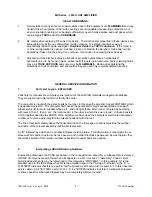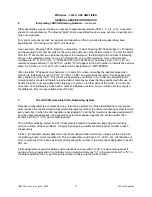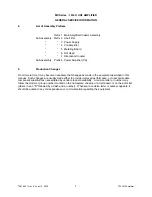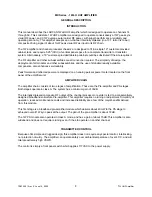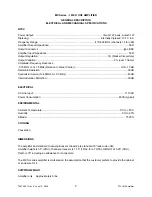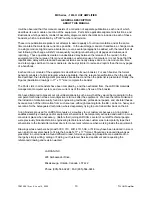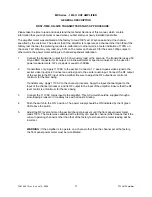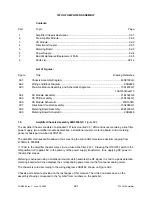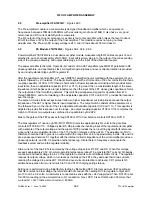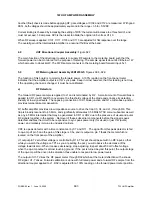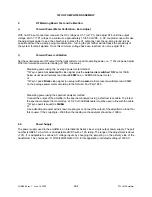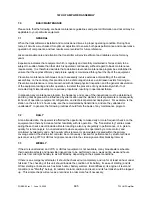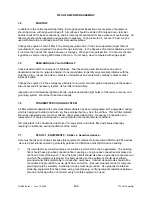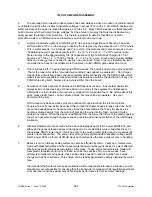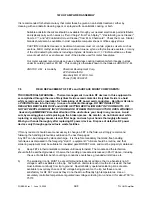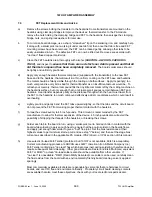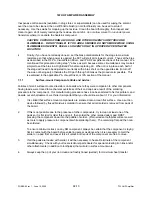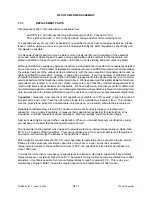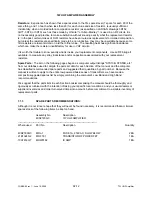
1W UHF AMPLIFIER ASSEMBLY
PUB99-92 rev 1: June 19, 2000
92-7
1
W UHF Amplifier
2.
The average person wearing rubber-soled shoes and walking across a woollen or synthetic carpet
or untreated vinyl tiled floor is able to generate voltages in excess of 15 to 20 kV. Most MOS devices will
suffer puncture of the oxide insulating their gates, at 20 to 40 V. Many CMOS devices are fabricated with
built-in zeners which will clamp foreign voltages, but the amount of energy that must be dissipated may
easily exceed the rating of this protection. It is therefore prudent to assume that little or no static
protection exists in a CMOS device and therefore you must provide your own.
3.
A typical unprotected gate of a CMOS logic IC has an input capacitance of about 5 pF and can
self-immolate at 20 V, so the energy to destroy the IC is given by the expression W = CV
2
/2 where
W is in watt-seconds, C is in farads, and V is in volts. One watt-second is also known as a Joule.
Substituting numeric quantities results in W = 5 x 10
-12
x 20 x 20 ¸ 2 = 1 x 10
-9
Joule per gate.
Stored energy in the approximately 100 pF capacitance of the human body charged to 15 kV,
becomes W = 100 x 10
-12
x 15000 x 15000 ¸ 2 = 11.25 x 10
-3
Joule.
Eleven and a quarter million
times more energy than is needed to destroy one gate input!
Some of us may therefore be led to
conclude that a body can annihilate more than eleven million CMOS gate oxides all at once.
4.
This is serious stuff. To avoid destroying CMOS devices, the human body must be grounded first.
That is the reason for all the "grounded surroundings" we suggest in paragraph 1. Don't forget,
though, that a circuit board has conductive metallic paths connecting into the CMOS parts, which
makes them all susceptible to mass devastation as easily as would be the destruction of any one
CMOS chip all by itself. Always ground yourself first, then the board.
5.
Avoidance of static exposure of boards and CMOS devices is easier. Ensure that boards are
always kept in conductive bags or boxes when not in place in the equipment, and that spare
CMOS ICs are in conductive chip carriers or plugged into conductive foam. Be careful about this
point; many plastic foams can be coloured black, but may still be an insulator. Use your
ohmmeter to be sure.
Don't accept any devices whose pins are punched through aluminum foil into foam plastic.
People who don't know better have used this method for shipment and storage of devices, but it
cannot be depended upon, because many times the holes made in the foil by the device pins
become enlarged simply from the motion of pressing the pins into the foam, and won't make
contact any longer. When the device is withdrawn from the foam, the friction of the plastic against
the pin can generate enough charge to cause puncture and consequent failure of the CMOS gate
insulation.
6.
Identical statements to those made in the above paragraphs apply to RF power MOSFETs, and
although the gates of these devices might appear to be considerably more robust than those of
the average CMOS logic device, this is due only to the much greater gate area and consequently
greater input capacitance. The same order of magnitude of gate oxide breakdown voltage exists
for RF power FETs as for small CMOS devices, therefore use the same order of care in handling.
7.
Believe it or not, ordinary analog meters can also be affected by static. Years ago, meters were
made with glass faceplates and had movements that were relatively insensitive, so were affected
little by stray static charges accumulating on the glass. Today, almost all meters are made with
clear plastic faceplates and many of these, such as the sensitive 50
μ
A ones we use, have
extremely compliant moving parts, thus can be easily caused to read incorrectly from a static
charge on their front surfaces. This charge can be readily generated by simply cleaning the meter
face.
It is important that meter accuracy be maintained within reasonable tolerances, because you as a
broadcaster are responsible for ensuring that the transmitter complies with all regulations pertinent
to its operation, and the easiest way of tracking its performance is from its meter readings.

